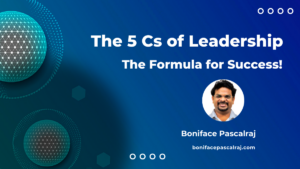In the fast-paced world of startups, achieving success is not merely about attracting a large customer base; it also hinges on effective customer retention and financial management. To navigate these waters, entrepreneurs must delve into the world of retention and cost metrics.
In this blog post, we will explore the secrets behind driving startup success by unveiling the power of retention metrics such as Customer Lifetime Value (CLV) and Customer Churn Rate (CCR). Additionally, we will shed light on cost metrics, namely Customer Acquisition Cost (CAC) and Burn Rate.
By understanding and strategizing around these metrics, startups can optimize their growth strategies and maximize their chances of survival in the competitive business landscape.
1. Understanding Retention Metrics
1.1 Customer Lifetime Value (CLV)
Customer Lifetime Value (CLV) quantifies the total revenue a business can expect to generate from a single customer throughout their entire relationship with the company. It aids in making informed decisions regarding customer acquisition costs and retention strategies.
Formula: LTV = Average Revenue per Customer x Average Customer Lifespan
CLV is calculated by multiplying the average value of purchase by the average number of purchases per year by the average duration of the customer relationship.
Illustration: Suppose a clothing retailer determines that the average customer spends INR 1,000 per purchase, makes three purchases per year, and remains a customer for five years on average. In this example, the CLV would be INR15,000 (INR1,000 * 3 * 5).
Flipkart, the renowned e-commerce powerhouse, employs strategic analysis of metrics such as the average order value, buying frequency, and customer loyalty programs to determine their Customer Lifetime Value (CLV). A high CLV is indicative of a robust and loyal clientele.
Benefits:
- Enhanced Profitability: CLV analysis helps identify and prioritize high-value customer segments, allowing businesses to invest resources more effectively and optimize marketing campaigns, resulting in increased revenue and profitability.
- Stronger Customer Relationships: Understanding long-term customer needs and preferences enables businesses to customize offerings, leading to higher satisfaction, loyalty, and advocacy. This personalized approach fosters lasting relationships and encourages repeat purchases.
- Informed Decision-Making: CLV provides insights for customer acquisition and retention strategies, allowing businesses to identify cost-effective channels, develop targeted campaigns, and implement retention initiatives tailored to valuable clientele.
- Accurate Revenue Forecasting: By understanding the average lifetime value of customers, businesses can project future revenue streams, plan effectively, and make informed investment decisions, ensuring long-term sustainability and growth.
1.2 Customer Churn Rate (CCR)
Customer Churn rate metric signifies the percentage of customers who discontinue using your product or service over a specific period.
Formula: Churn Rate = (Number of Churned Customers / Total Customers at Start of Period) x 100
Illustration: A subscription-based music streaming service has 1000 subscribers at the beginning of the month, and 50 cancel their subscriptions. The churn rate would be 5%.
Fintech startup CRED offers exclusive rewards to credit-worthy individuals. While their churn rate might be lower compared to other subscription services due to the targeted audience, they would still track this metric to understand user engagement and retention strategies.
Benefits:
- Detecting Customer Discontent: Utilizing churn rate metrics assists in identifying specific areas of concern or deficiencies within our products, services, or overall customer experience.
- Strategic Customer Retention: Routine monitoring of churn rate empowers businesses to formulate strategies aimed at minimizing attrition, bolstering customer loyalty and accentuating focus on the retention of existing customers.
- Assessment of Marketing Initiatives: The churn rate acts as a critical benchmark for evaluating the potency and efficacy of marketing campaigns or business ventures, thereby facilitating continual refinement and optimization processes.
- Gaining Competitive Superiority: Comprehending the reasons behind customer abandonment offers invaluable insights into their preferences, anticipations,and challenges. In response to such understanding, we can adapt our offerings accordingly to excel in delivering superior customer experiences whilst concurrently securing a competitive edge over rivals.
2. Leveraging Cost Metrics
2.1 Customer Acquisition Cost (CAC)
Customer Acquisition Cost (CAC) metric assesses the average cost associated with acquiring a new customer. It functions as an essential instrument for enterprises to evaluate the effectiveness of their marketing tactics and sales efforts.
Formula: CAC = Summation of Marketing and Sales Expenditures / Number of Customers Acquired
Illustration: Visualize a boating service startup that allocates INR 2,00,0000 per month toward its sales and marketing initiatives, yielding 50 customers in the process. Their corresponding CAC would stand at INR 4,000 for each customer.
Benefits:
- Informed Decision-Making: Understanding marketing and sales efficacy enables businesses to analyze the effectiveness of various strategies and allocate resources wisely, leading to increased customer acquisition, retention, and conversion rates.
- Identification of Effective Strategies: Analysis helps identify the most successful marketing and sales tactics for the target audience, enabling companies to focus efforts on strategies that yield the best results.
- Resource Optimization: By allocating resources based on the performance of different strategies, businesses can maximize their return on investment and minimize wastage, ensuring efficient use of marketing and sales budgets.
- Continuous Improvement: Insights into marketing and sales efficacy allow businesses to identify areas for improvement and make necessary adjustments to campaigns, ensuring alignment with overall business objectives and staying ahead of the competition.
2.2 Burn Rate
Burn rate metric measures the rate at which a business is spending its available capital. By monitoring the burn rate, entrepreneurs can estimate how long their funds will last and make informed decisions regarding fundraising or cost-cutting measures.
Formula: Burn Rate = Total Expenses / Time Period
Illustration: Let us say a company has total expenses of INR 12,00,000 over a year. The burn rate would be calculated by dividing the total expenses (INR 12,00,000) by the time period (12 months). In this case, the burn rate would be INR 12,00,000/12 months = INR100,000 per month.
Suppose a tech startup in India is spending ₹500,000 each month on various operational expenses. The burn rate for this company would be ₹500,000 per month.
Benefits:
- Financial Planning: Burn rate helps companies estimate how long their existing funds will last. It assists in strategic financial planning and budgeting.
- Resource Allocation: By tracking burn rate, companies can evaluate their spending patterns and allocate resources efficiently.
- Performance Evaluation: Burn rate can indicate the overall financial health and performance of a business. It allows management to assess if the company is operating within its budget and if adjustments are required.
- Investor Confidence: Burn rate provides valuable insight to potential investors. It helps them understand how quickly the company is consuming funds and how long it can sustain its current operations.
- Decision Making: Burn rate data can help management make informed decisions regarding cost-cutting measures, scaling operations, and fundraising efforts.
In today’s hyper-competitive startup ecosystem, retaining customers while managing costs is of paramount importance. We have explored two essential retention metrics, namely Customer Lifetime Value (CLV) and Customer Churn Rate (CCR), which provide insights into the profitability and loyalty of customers. Moreover, the discussion also delved into cost metrics, including Customer Acquisition Cost (CAC) and Burn Rate, enabling entrepreneurs to evaluate the efficiency of their marketing efforts and the sustainability of their financial resources. By understanding, measuring, and optimizing these metrics, startups can forge a path towards long-term success, driving growth, and profitability while keeping unnecessary expenses in check.



